Purple rice, or purple sticky rice, is an ancient grain with a rich history and a plethora of health benefits. This rice variety, also known as Emperor’s Rice or Forbidden Rice, was once reserved for royalty and the elite due to its rarity and challenging cultivation. Fortunately, this unique rice is now accessible to all. Let’s delve into the world of purple rice and uncover its characteristics and advantages.
1. Unveiling Purple Rice:
Purple rice, with its captivating hue ranging from light violet to deep indigo, originates from Japan. It is also known as gạo tím than in Vietnamese, literally translating to “charcoal purple rice.” This variety is devoid of gluten and presents a culinary and nutritional delight.
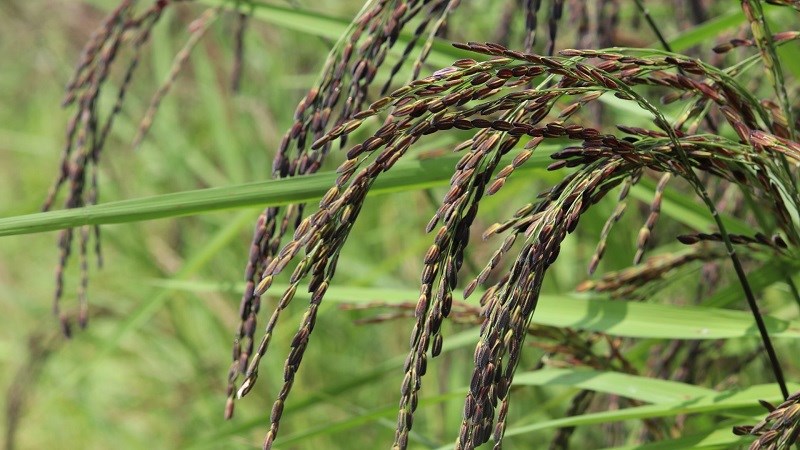 Gluten-free Purple Rice
Gluten-free Purple Rice
The cultivation and research of purple rice in Vietnam are attributed to Engineer Ho Quang Cua, Deputy Director of the Soc Trang Province’s Department of Agriculture and Rural Development. This variety is particularly challenging to cultivate and care for.
Purple rice comes in two primary types: purple sticky rice and purple glutinous rice. Both varieties are gluten-free, making them a wholesome choice for those with gluten intolerance or celiac disease.
2. Distinguishing Purple Rice from Brown Rice:
It’s easy to confuse purple rice with brown rice as they share a similar appearance. However, several distinct characteristics set them apart. Here’s a guide to help you differentiate between the two:
Alternative Names:
Brown Rice: Rice with husk, also known as paddy rice or gạo lứt in Vietnamese.
Purple Rice: Known as Emperor’s Rice, Forbidden Rice, or Black Rice.
Varieties:
Brown Rice: Includes brown sticky rice, brown black rice, brown glutinous rice, and brown red rice.
Purple Rice: Comprises purple sticky rice and purple glutinous rice.
 Distinguishing Purple Rice (left) from Brown Rice (right)
Distinguishing Purple Rice (left) from Brown Rice (right)
Characteristics and Origin:
Brown Rice: Derived from regular rice, with the husk retained and the outer hull removed.
Purple Rice: Originated in Japan and further developed in Vietnam by Engineer Ho Quang Cua.
Notable Nutrients:
Brown Rice: Lacks the anthocyanin pigment.
Purple Rice: Boasts a distinctive purple color due to its rich anthocyanin content.
3. The Many Benefits of Purple Rice:
Purple rice is a nutritional powerhouse, offering a multitude of health benefits to consumers. Here’s a closer look at why this ancient grain is so highly regarded:
Rich in Antioxidants:
 Purple Rice Porridge
Purple Rice Porridge
Purple rice belongs to the flavonoid group of plants and derives its distinctive color from anthocyanin, a potent antioxidant. According to Vinmec International Hospital’s health portal, this pigment exhibits anti-inflammatory and anti-cancer properties, making it a formidable ally in preventing various ailments, including cancer, cardiovascular disease, diabetes, and obesity.
High in Dietary Fiber:
 Ideal for Weight Loss
Ideal for Weight Loss
The subtle sweetness of purple rice comes from retaining the rice bran, which is rich in dietary fiber. This fiber content supports healthy digestion and bowel function. Additionally, as per the Vinmec International Hospital’s health portal, fiber aids in weight loss, lowers cholesterol, and helps regulate blood pressure.
A Good Source of Plant-Based Protein:
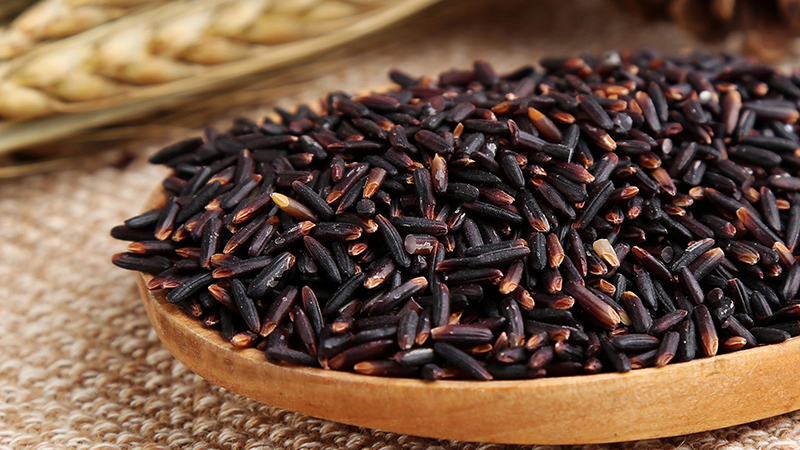 Suitable for Vegans and Vegetarians
Suitable for Vegans and Vegetarians
Purple rice is an excellent source of plant-based protein, making it a favorite among vegans and vegetarians. This rice variety supports bone health, aids in cell growth, and assists in repairing damaged muscle tissues.
Abundant in Iron:
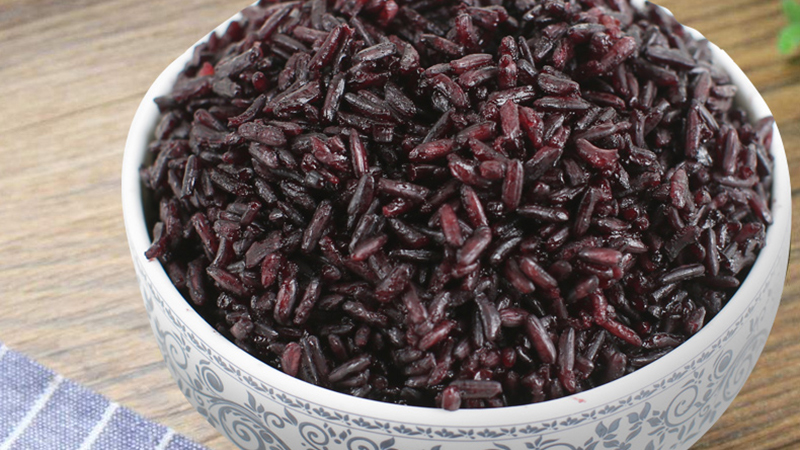 Purple Rice is Rich in Iron
Purple Rice is Rich in Iron
Purple rice is an excellent source of iron, which is essential for controlling body movements and facilitating nerve impulses. Iron also plays a vital role in producing red blood cells, preventing anemia, and ensuring proper oxygen transport in the body.
4. Comparing Purple Rice to Other Types of Rice:
Purple rice, as a whole grain, offers the nutritional benefits of fiber and other nutrients found in the bran and germ, similar to brown rice. Purple rice surpasses white rice in nutritional value, as white rice has been stripped of its bran and germ during processing.
Like other types of rice, purple rice does not contain gluten, making it a safe choice for those with gluten intolerance. In terms of calorie content, one-third of a cup of purple sticky rice contains approximately 200 calories, while the same amount of brown rice contains only 82 calories.
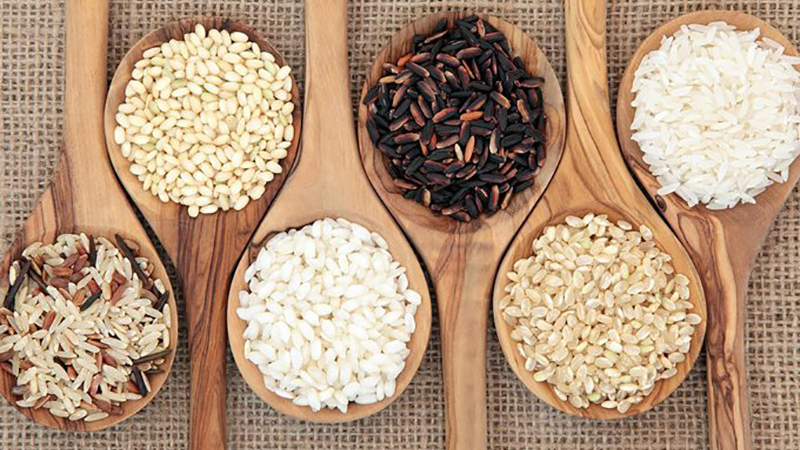 Purple Rice Offers More Health Benefits than White Rice
Purple Rice Offers More Health Benefits than White Rice
Fiber is crucial for individuals with diabetes, as it helps mitigate the impact of carbohydrates. Purple rice and brown rice contain similar amounts of fiber, contributing a small portion of the daily fiber requirement.
It’s important to note that the recommended daily fiber intake is 20-25 grams for women and 30-40 grams for men. Therefore, it’s advisable to include various fiber sources in your diet, rather than relying solely on purple rice.
Both purple rice and brown rice contain trace amounts of arsenic, a toxin absorbed from the soil during cultivation. However, white rice has lower arsenic levels due to the removal of the outer layers during milling. Rest assured that thoroughly rinsing and cooking the rice can effectively reduce arsenic levels.
Purple rice stands out with its unique antioxidant pigments, higher iron content, and superior antioxidant capacity compared to brown rice.
5. Cooking with Purple Rice:
To unlock the full nutritional potential of purple rice, it’s essential to prepare it correctly. Here’s a step-by-step guide to cooking perfect purple rice:
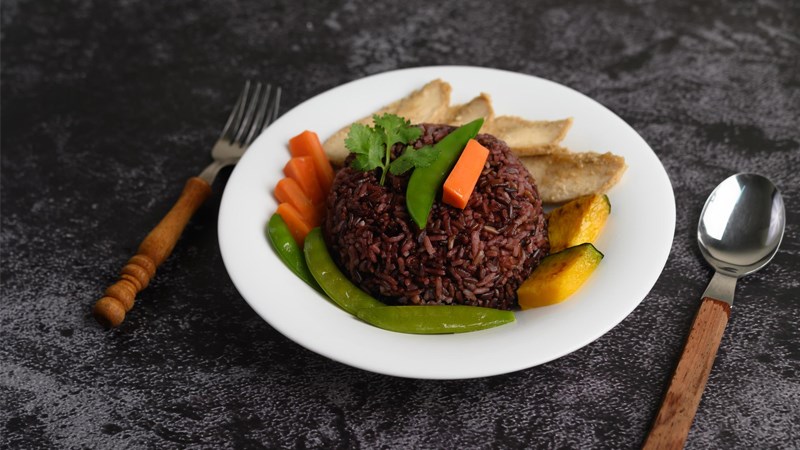 Delicious and Fragrant Purple Rice
Delicious and Fragrant Purple Rice
Step 1: Rinse the rice 2-4 times at room temperature without over-scrubbing to avoid removing the beneficial bran layer.
Step 2: Soak the rice for approximately 30 minutes before cooking.
Step 3: For optimal results, cook the rice with a ratio of 1 part rice to 1.2 parts water. You can also add a pinch of salt or use bone broth for enhanced flavor. Once the rice is cooked, let it rest for about 10 minutes before serving to allow the flavors to develop fully.
Further Reading: ? Exploring the Different Types of Brown Rice
This article has shed light on the wonders of purple rice, from its historical origins to its nutritional prowess. We hope this information enriches your understanding and inspires you to incorporate this ancient grain into your diet. Have a wonderful day ahead!
Source: Vinmec International Hospital






































